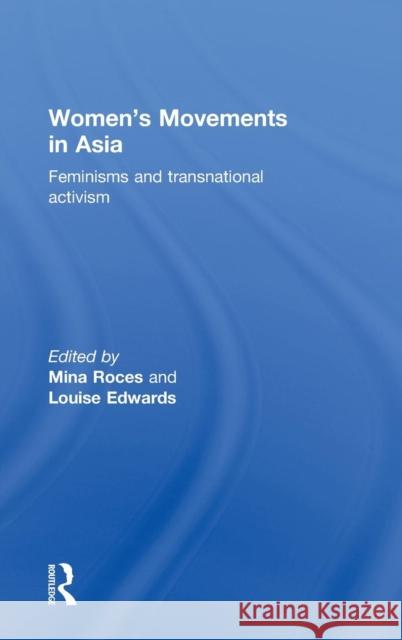Women's Movements in Asia: Feminisms and Transnational Activism » książka
Women's Movements in Asia: Feminisms and Transnational Activism
ISBN-13: 9780415487023 / Angielski / Twarda / 2010 / 288 str.
Women's Movements in Asia: Feminisms and Transnational Activism
ISBN-13: 9780415487023 / Angielski / Twarda / 2010 / 288 str.
(netto: 877,23 VAT: 5%)
Najniższa cena z 30 dni: 881,54
ok. 22 dni roboczych
Bez gwarancji dostawy przed świętami
Darmowa dostawa!
Women's Movements in Asia is a comprehensive study of women's activism across Asia. With chapters written by leading international experts, it provides a full overview of the history of feminism, as well as the current context of the women's movement in 12 countries: the Philippines, China, Indonesia, Japan, Burma, Singapore, Vietnam, Malaysia, Thailand, Cambodia, Hong Kong, Korea, India and Pakistan. For each of these countries the manner in which feminism changes according to cultural, political, economic and religious factors is explored. The contributors investigate how national feminisms are influenced by transnational factors, such as the women's movements in other countries, colonialism and international agencies. Each chapter also considers what Asian feminists have contributed to global theoretical debates on the woman question, the key successes and failures of the movements and what needs to be addressed in the future. This breadth of coverage, together with suggestions for further reading and watching, and an integrated cross-national timeline makes Women's Movements in Asia ideal for use on courses looking at women and feminism in Asia. It will appeal both to students and specialists in the fields of gender, women's and Asian studies.
Women's Movements in Asia is the first comprehensive study of womenâs activism across Asia. With chapters written by leading international experts, it provides a full historical overview of the history of feminism, as well as the current context of the womenâs movement, in 14 countries: the Philippines, China, Indonesia, Japan, Burma, Singapore, Vietnam, Malaysia, Thailand, Cambodia, Hong Kong, Korea, India and Pakistan.
For each of these countries the book explores the manner in which feminism changes according to cultural, political, economic and religious factors. Each chapter also investigates how national feminisms are influenced by transnational factors, such as the womenâs movements in other countries, colonialism and international agencies.
The volume also considers what Asian feminists have contributed to global theoretical debates on the woman question, the key successes and failures of the movements and what still needs to be addressed in the future.
This breadth of coverage, together with suggestions for further reading and watching, and an integrated cross-national timeline makes Women's Movements in Asia perfect for use on courses looking at women and feminism in Asia. It will appeal both to students and specialists in the fields of gender, womenâs and Asian studies.











